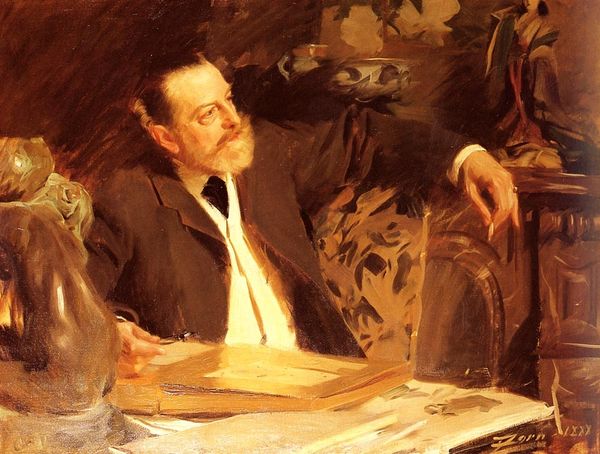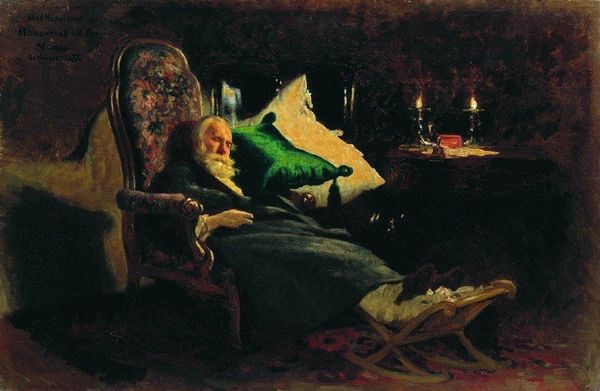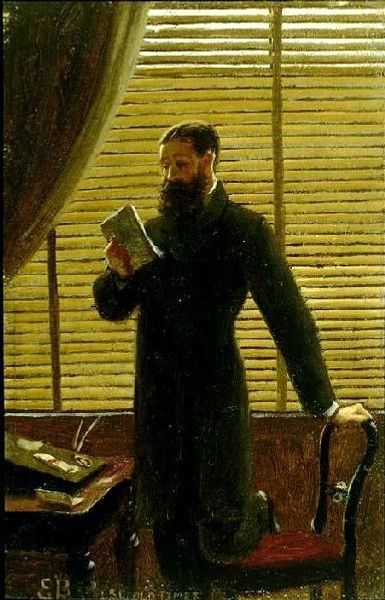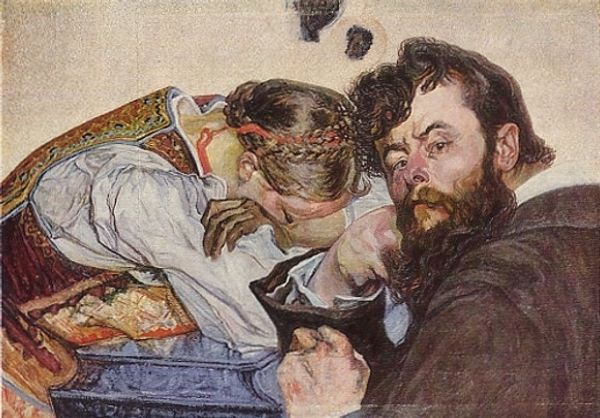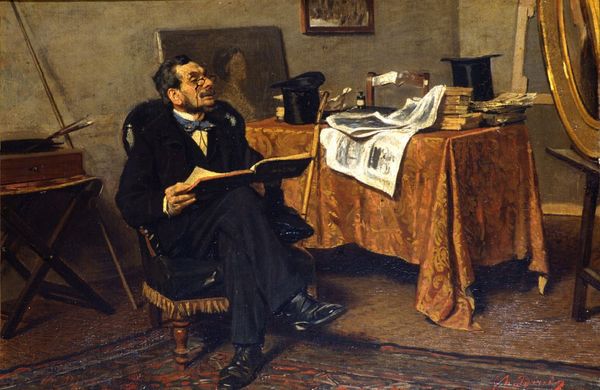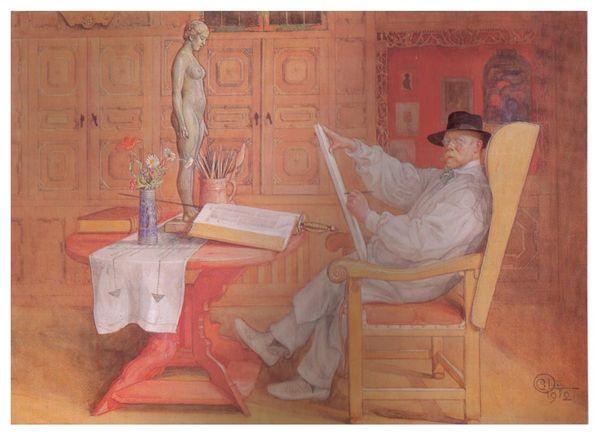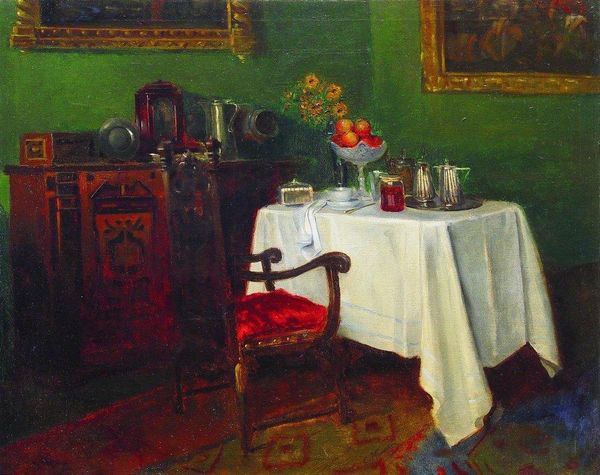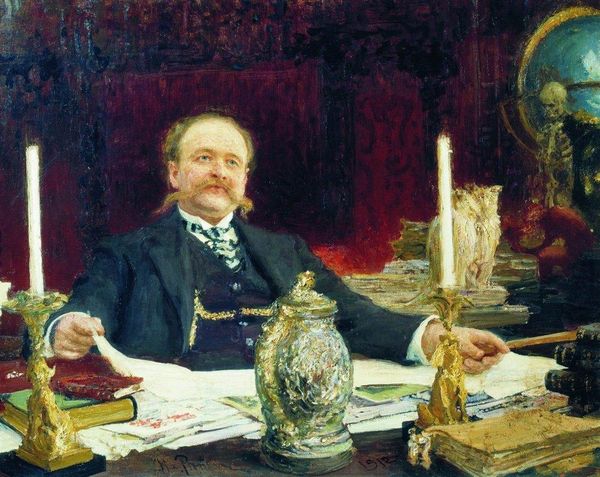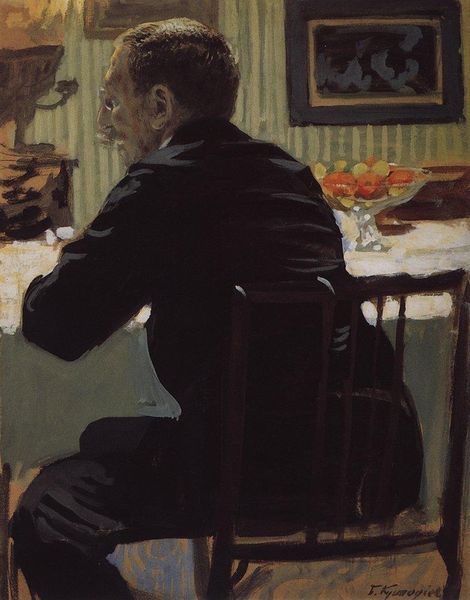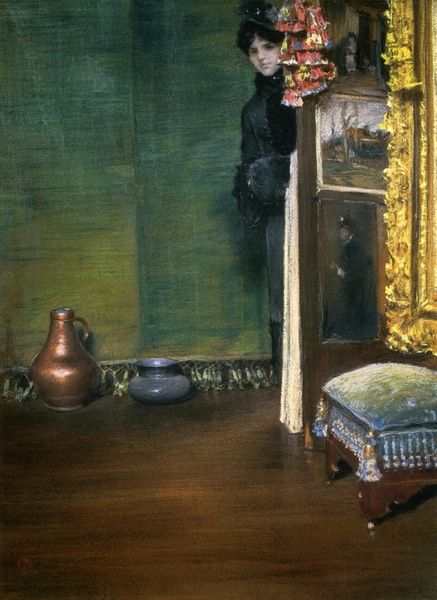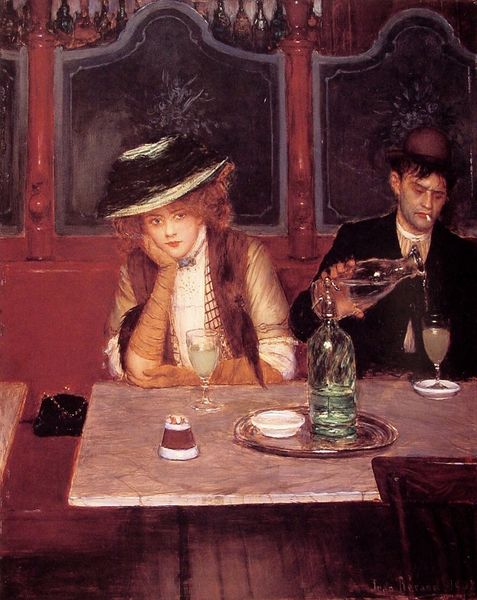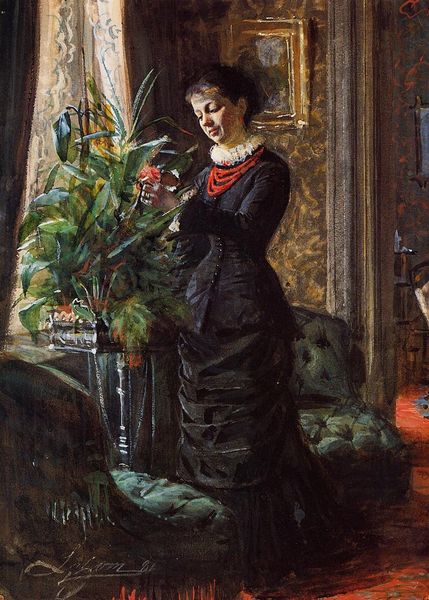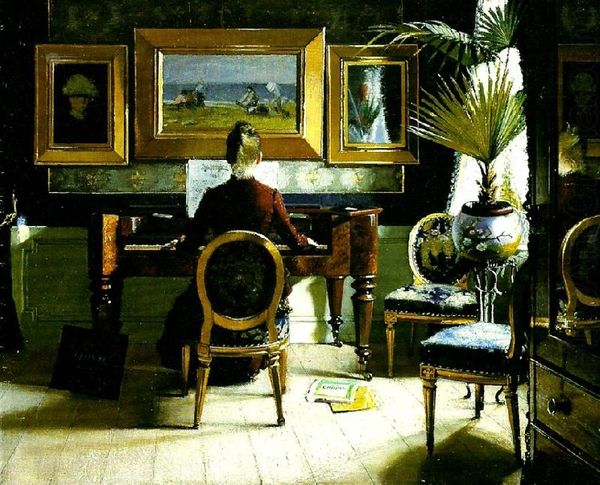
oil-paint
#
portrait
#
oil-paint
#
male-portraits
#
genre-painting
#
academic-art
#
realism
Dimensions: 121.92 x 152.4 cm
Copyright: Public domain
Editor: We're looking at Thomas Eakins' oil on canvas, "Portrait of Professor Benjamin H. Rand," from 1874. It feels very detailed and a bit cluttered, but the focus is definitely on the professor. I’m curious about how the artist’s decisions affect the viewing experience. What do you see in this piece, in terms of its structure and materiality? Curator: Immediately, I am drawn to the formal composition. Eakins has constructed a complex interplay of textures, from the reflective glass of the microscope on the left to the tactile fur of the cat and the patterned fabric draped on the right. Observe how the verticality of the microscope contrasts with the horizontal plane of the cluttered desk. The professor’s head aligns with the upper portion of the microscope, binding them together, whereas the cat pulls the eye toward the contrasting red sash draped nearby. Editor: So, the contrast in textures and forms creates a dynamic composition? The sash especially draws my eyes away from the Professor himself, actually. Curator: Precisely. And consider the semiotic significance of the microscope – it suggests the professor's intellectual pursuit, juxtaposed with the casual, almost intrusive, presence of the cat. Do you perceive how the muted color palette contributes to the somber mood? Editor: Yes, the darkness sort of concentrates the attention on the professor's face and hands, as they break up the dark background. And it is pretty somber, now that you mention it! I initially perceived it as detailed realism. Curator: The dark palette helps the gaze to linger on areas in a visually unified manner. Further note how the subtle use of chiaroscuro illuminates Professor Rand's features, highlighting his gaze and engagement with the document on his desk. The texture variations offer great rewards for close viewing. What's your take on that aspect? Editor: I appreciate your observation of these juxtapositions of textures, colours and structures; now I understand better how all these internal contrasts add to the effect and deepen my encounter with the work! Curator: Indeed! The artist's command of these formal elements transforms a portrait into a stimulating visual study of light, form, and meaning.
Comments
No comments
Be the first to comment and join the conversation on the ultimate creative platform.
